Aomori
The majestic nature of Shirakami Sanchi, Oirase Mountain Stream and the Tanesashi Coast, one of Japan’s most beautiful cherry blossom views in Hirosaki Park, exciting regional summer festivals and seasonal scenic beauty at Lake Towada and the Hakkoda Mountains
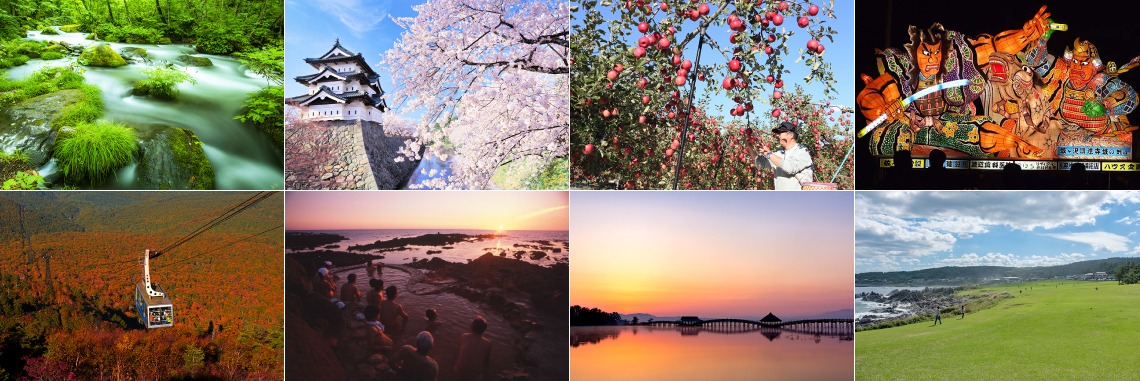
Aomori’s beautiful natural wonders
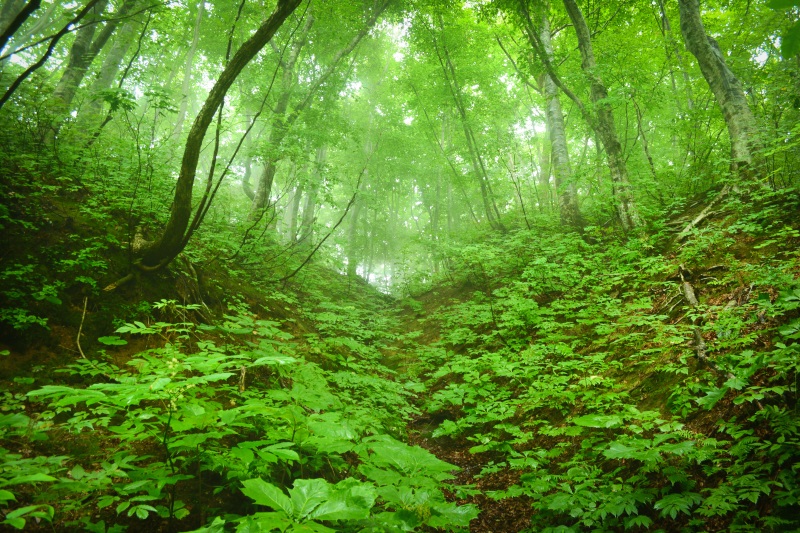
Shirakami Sanchi
A UNESCO World Heritage Site is a mountainous area extending across Aomori and Akita. It is home to one of the world’s largest primeval beech forests stretching over 130,000 hectares, 17,000 hectares of which are designated Natural Heritage. Although much of the designated area is unexplored, there are various hiking trails available through the pristine natural surroundings of Shirakami Sanchi.
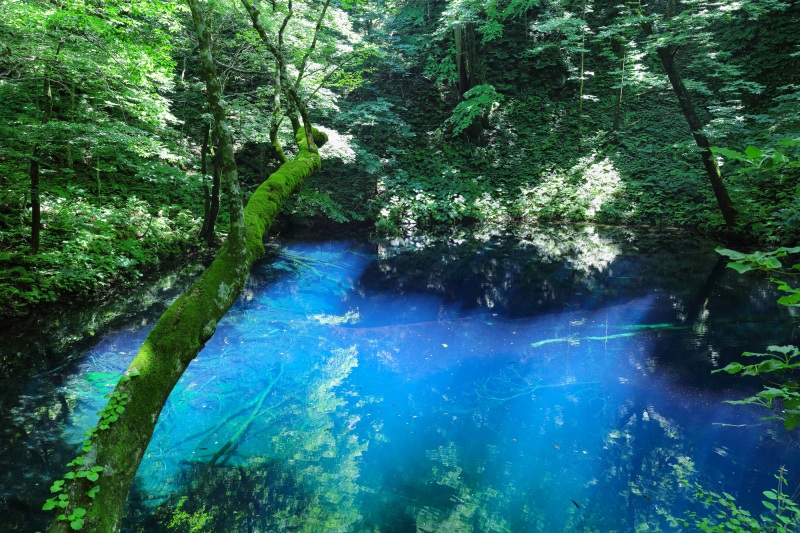
Ao-Ike
Famous for its brilliant cobalt blue water, Ao-Ike Pond is located in Shirakami Sanchi, a World Heritage Site.
The pond varies in colour depending on the season, the best season is said to be from April to August thanks to the high angle of the sun.
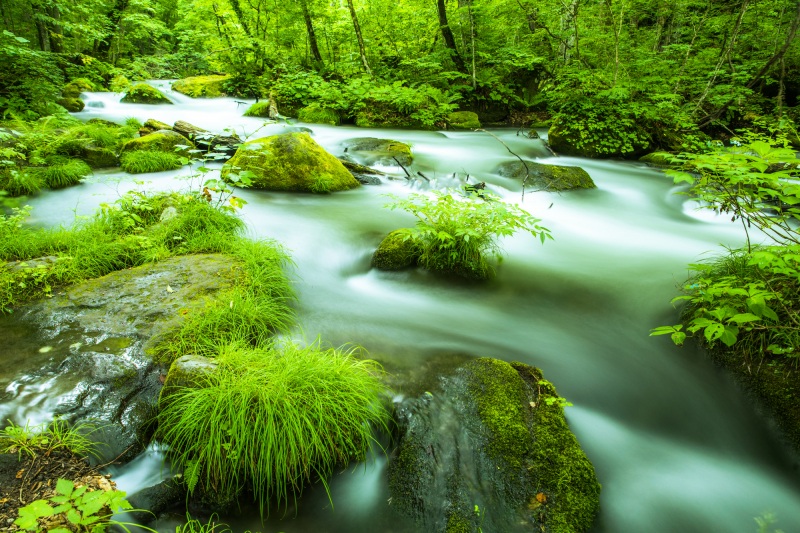
Oirase Mountain Stream
The stream stretching for 14km is home to boundless scenic beauty. The journey between viewing highlights can be made by car or bus however walking the route is particularly recommended in order to enjoy this spectacle to its fullest, the extra time and effort are highly rewarded! While walking through the natural green tunnels of the trail, visitors can appreciate the beauty of the vibrant mosses and foliage, breathe in the forest air, and be dazzled by the dance of the sunshine filtering through the overhead foliage on the sparkling water surface.
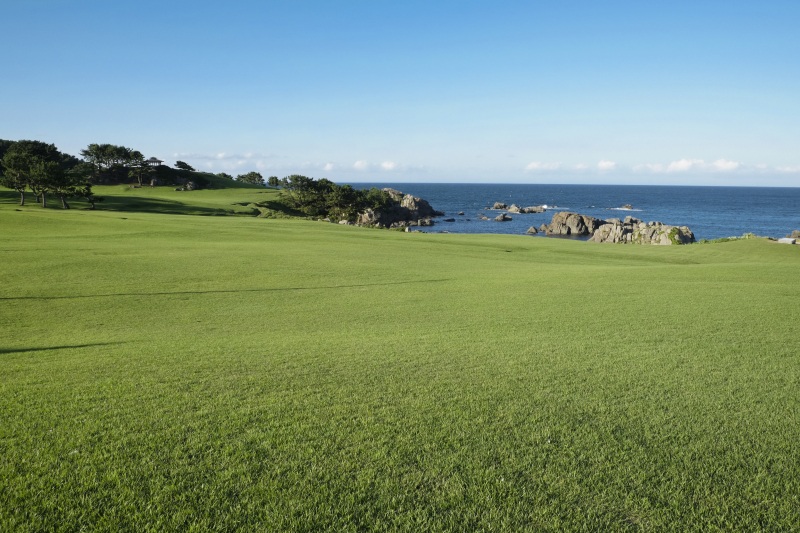
The Tanesashi Coast
The Tanesashi Coast is located in the Sanriku Fukko National Park, a designated place of scenic beauty. Stretching along the coast for 12km, the area is home to over 600 types of plants and visitors can discover the unique and diverse plant life from spring to autumn. A walk along the coastal path provides visitors with a kaleidoscopic scenery of colourful flowers, verdant lawns, uniquely shaped rock formations, a 100-year-old pine grove and flocks of friendly black-tailed gulls. The plants and flowers are at their best from May to October.
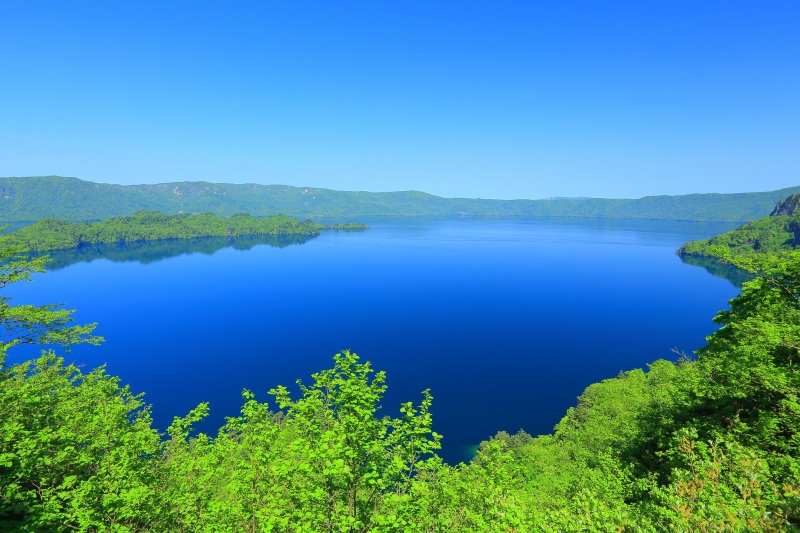
Lake Towada
Located in the Towada-Hachimantai National Park, Lake Towada is a crater lake rimmed by the crater’s mountainous edge and is the source of the Oirase Mountain Stream. The lake is 46km in circumference and has a maximum depth of 327m making it the third deepest in Japan. Crater lakes are topographic depressions formed by massive volcanic eruptions and subsequently filled with rain water over long periods of time. Come and be overwhelmed by this creation of enormous volcanic energy and its million years of history! The lake is known as the “Mystic Lake” as it never freezes during winter despite its location in Japan’s northern highlands.
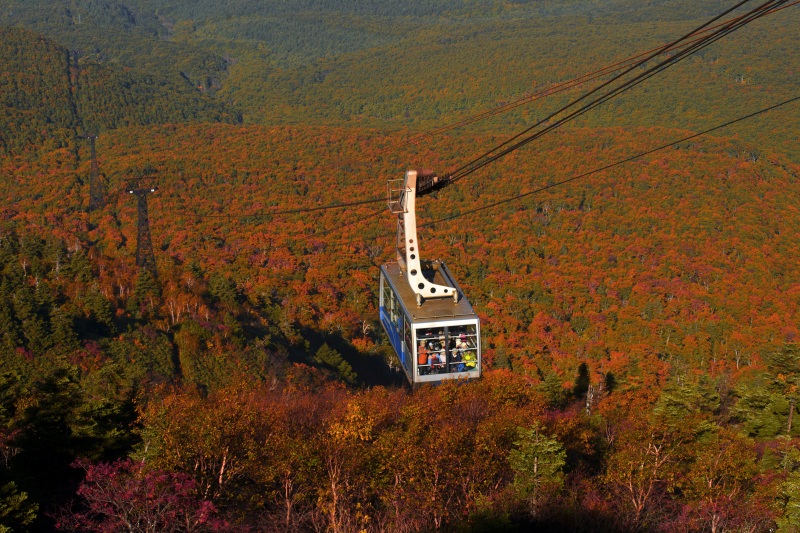
Hakkoda Ropeway
The 2.5km Hakkoda Ropeway offers superb views of the natural scenery of the Hakkoda Mountain Range as it climbs 650m up Mount Tamoyachi. Seasonal spectacles include fresh verdant greens in mid-May, pretty alpine flowers from mid-May to mid-August, vibrant autumnal colours from late September to mid-October and brilliant hoar frosts in January and February. Year-round skiing is available with the best conditions available from late November to mid-May.Visitors can enjoy panoramic views stretching as far as the city of Aomori, Mutsu Bay, Tsugaru Peninsula, Shimokita Peninsula and Mount Iwaki on fine days.
Aomori’s history, culture and festivals
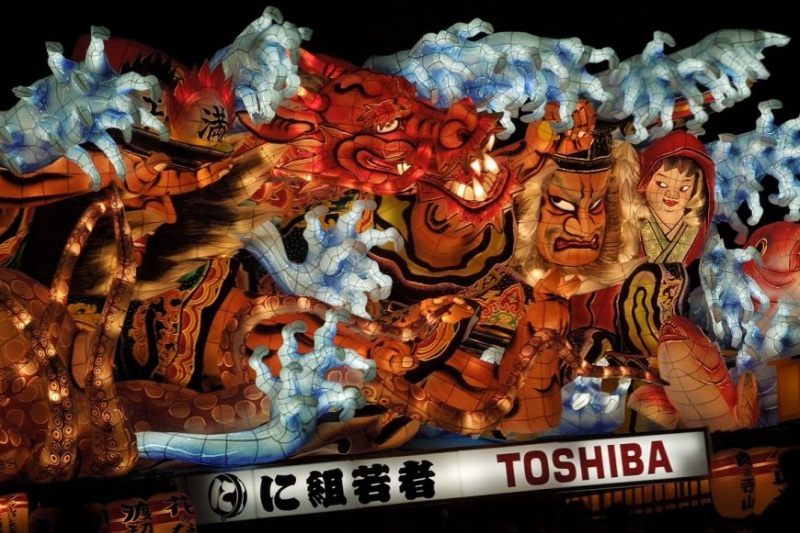
Aomori Nebuta Festival
The Aomori Nebuta Festival is Tohoku’s iconic summer festival featuring large paper floats each weighing 4 tons parading through the main streets of Aomori with Taiko drums, shouting, musicians and jumping dancers in vibrantly coloured costumes known as Haneto. Join the festival and share in the enthusiasm of the locals! The festival takes place from 2 to 7 August each year.
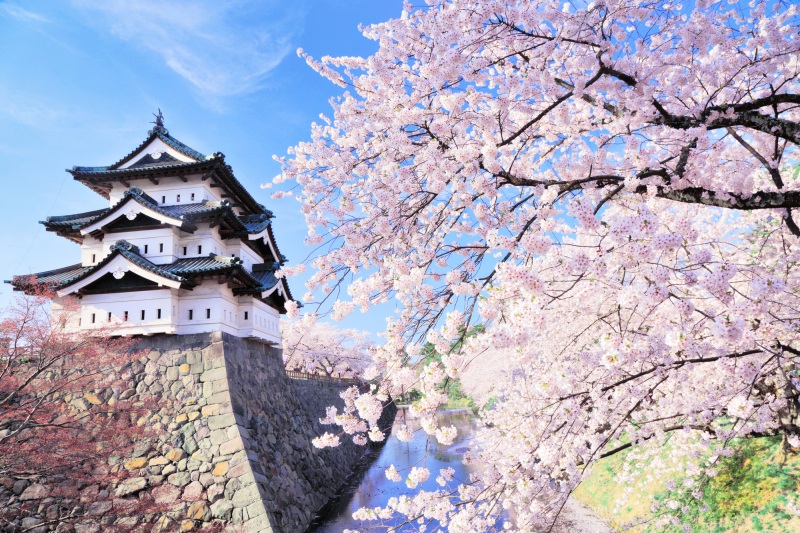
Hirosaki Castle
Located in Hirosaki (Oyo) Park, Hirosaki Castle is the northernmost remaining castle tower in Japan and is designated an Important Cultural Property. Along with the castle tower, the castle gates, bridges and moats are well preserved allowing visitors to travel back in time to the Edo Period. Two million domestic and international visitors come to one of Japan’s most famous cherry blossom viewing festivals, the “Hirosaki Sakura Festival “ taking place in Hirosaki Park from late April to early May.
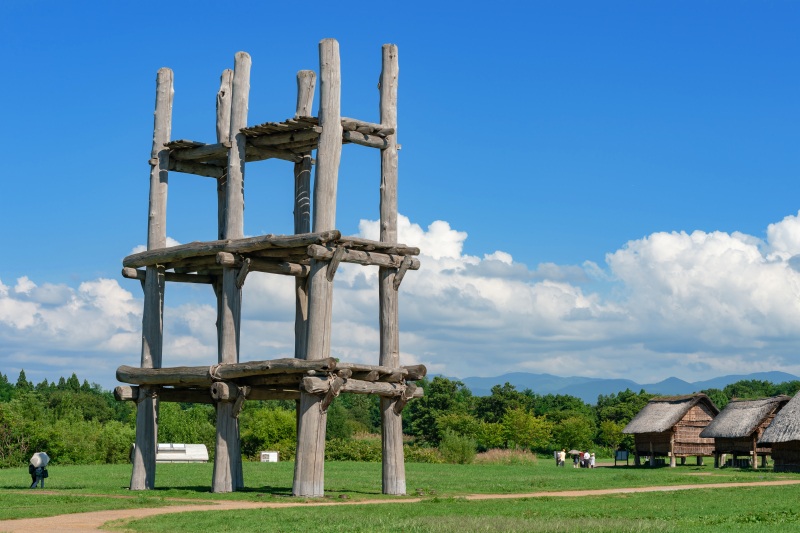
Sannai Maruyama Ruins
Sannai Maruyama Ruins is Japan’s largest archaeological site of a Jomon period village (15,000 B.C. to 300 B.C.) and is designated a national historic site. The site is known by the motto “large, long and many” derived from the large scale of the ruins, the long 1,500 years of village life and its many archaeological discoveries.
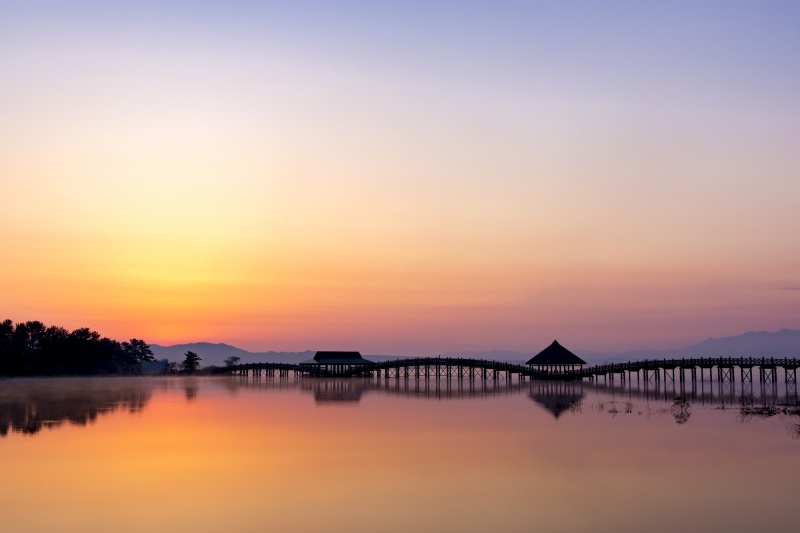
Tsuru-no-Mai Bridge
The 300m triple-arched Tsuru-no-Mai Bridge is Japan’s longest wooden bridge and is made from locally produced Hiba (Japanese cypress) trees. The bridge spans a section of Lake Tsugaru Fujimi with magnificent views of Mount Iwaki. The bridge was constructed in 1994 using traditional Japanese architectural techniques. Locals and tourists alike love the bridge for the warmth of its wooden finish and elegant arches.
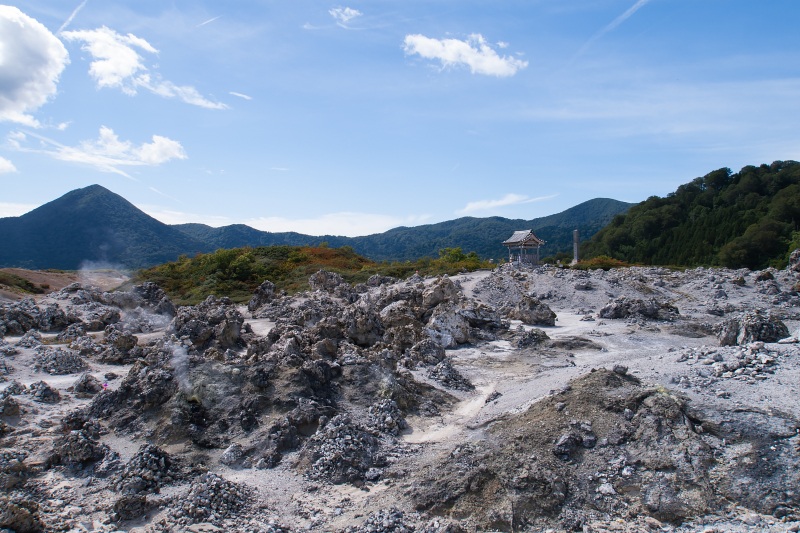
Osorezan Bodaiji Temple
Mount Osore on the Shimokita Peninsula is one of Japan’s three most sacred mountains along with Mount Hiei and Mount Koya. Osorezan Bodaiji Temple was founded here in 862. Legend has it that the priest Ennin founded Risshakuji Temple in the mountains of Yamagata after having a divine dream and then came here to found Osorezan Bodaiji Temple. Nestled on the shore of the crater-lake Lake Usori, Osorezan Bodaiji Temple appears cut-off from the outside world. Surrounded by the sparse landscape of Lake Usori and the surrounding mountains, local tradition states that the temple is the final destination for spirits.
Onsens in Aomori
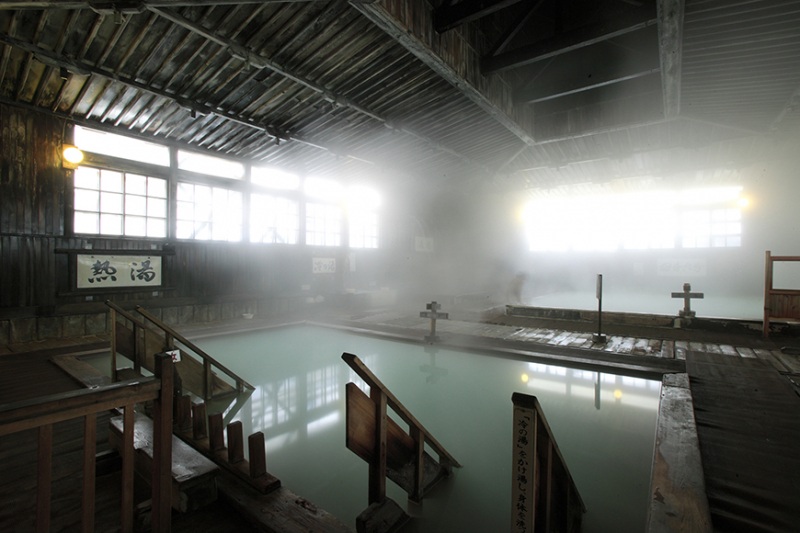
Sukayu Onsen
Known as “Hiba Sennin Buro” (the 1,000 person bath), Sukayu Onsen is a traditional hot spring famous for its large mixed-gender bath. The bath is constructed with Japanese cypress and is filled with classic charm and the scent of sulphur.
With a history stretching back 300 years, Sukayu Onsen is known as one of the earliest locations that people visited to experience the health benefits of a hot spring treatment. It was one of the first hot springs recognised as a national hot spring health resort.
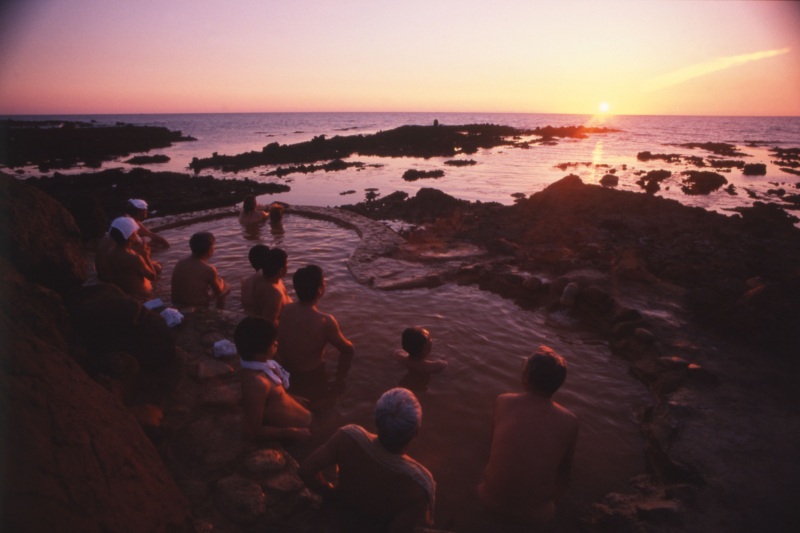
Koganesaki Furofushi Onsen
Koganesaki Furofushi Onsen is a seaside hot spring featuring an open-air bath looking out onto the sea. Indulge in an exceptionally luxurious soak in this open-air bath while enjoying the dazzling view of the glowing sunset over the sea. Day visits are available until 4pm however an overnight stay is recommended to enjoy this stunning sunset view along with the excellent local seafood served for dinner!
Aomori’s culinary highlights
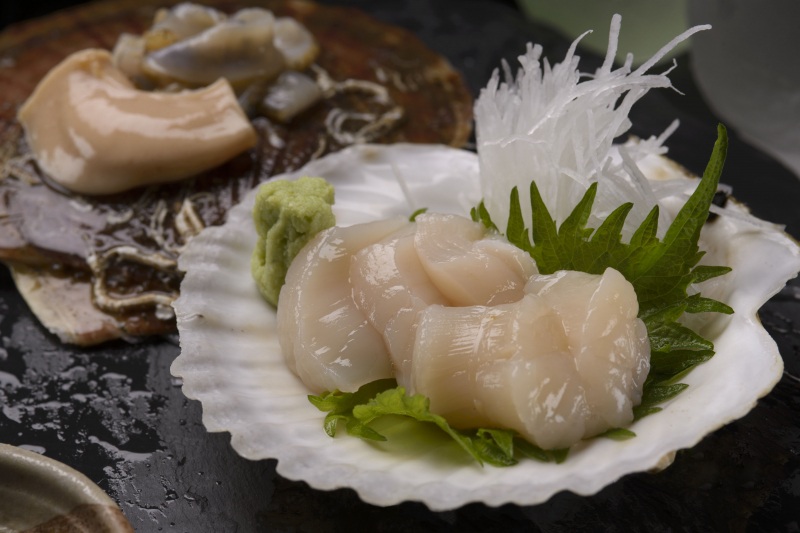
Scallops, Oma Maguro (tuna), mackerel and squid
Scallops caught in Mutsu Bay are the first thing that comes to mind when people think of the seafood of Aomori. Their elegantly sweet and mellow flavour is mouth-watering! The nationally renowned Oma Maguro (tuna) is perfectly fatty, while Hachinohemaeoki mackerel is highly praised as Japan’s fattiest mackerel. Squid drying in the sun is the iconic Aomori coastal scenery resembling translucent curtains in front of the sea.
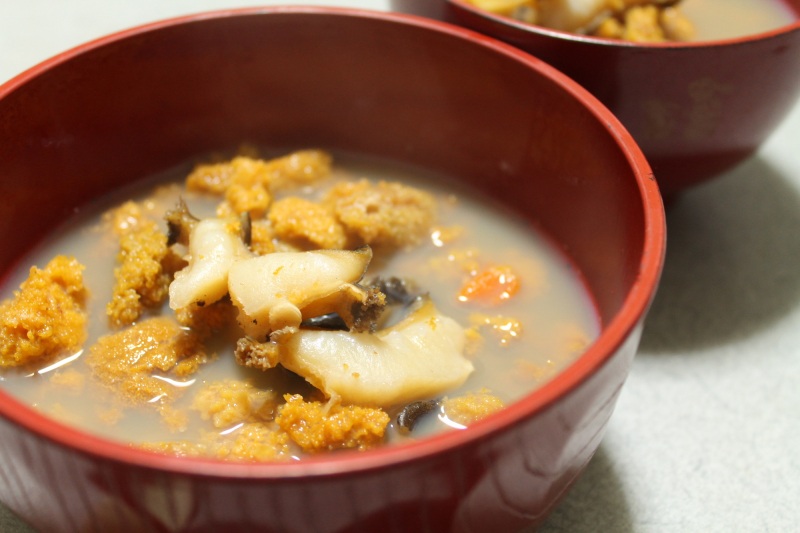
Ichigoni, Jappa-jiru and Senbei-jiru
Ichigoni is a delicate soup made with fresh sea urchins and abalones. Jappa-jiru is a hot pot dish of the head and bony sections of fish (Jappa is a term for these parts in the local dialect) stewed with root vegetables such as Daikon radishes and carrots and seasoned with salt or miso. Equally popular, Senbei-jiru is a hot pot stew of vegetables and pieces of Nanbu Senbei (local rice crackers specially made for hot pot) simmered in a broth of chicken or mackerel. A unique dish for visitors to enjoy the chewy texture of Nanbu Senbei. Warm your body and soul with Aomori’s abundant local specialties!
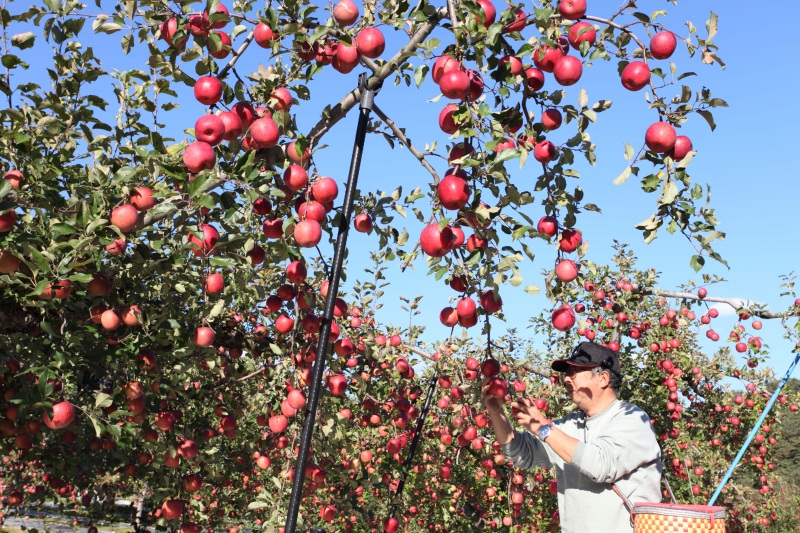
Apples
Apples are the symbol of Aomori’s agricultural production. A wide variety of apples are available depending on the season and there are many farms open to the public where visitors can pick their own apples. Hirosaki, known as the city of apples, features 50 cafes and shops offering apple pies and a range of other delicacies in the city centre. Be sure to come and savour these sweet treats!